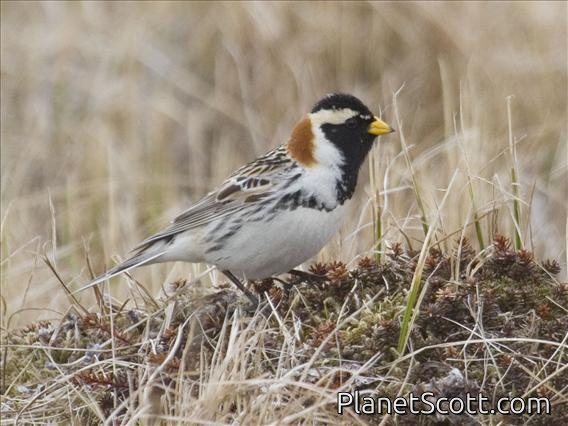Lapland Longspur (Calcarius lapponicus)

Lapland Longspur (Calcarius lapponicus) - Male Breeding
×


Lapland Longspur (Calcarius lapponicus) - Male Breeding
About Lapland Longspur (Calcarius lapponicus)
- Kingdom: Animals
- Phylum: Chordates
- Class: Birds
- Order: Perching Birds
- Family: Longspurs and Snow Buntings
The Lapland longspur, also known as the Lapland bunting, is a passerine bird in the longspur family Calcariidae, a group separated by most modern authors from the Fringillidae.
Source: Wikipedia
Visits
-
2007-11-11
Golden Gate Park - Buffalo Paddock, United States of America -
2010-05-29
Saint George Island, United States of America -
2010-10-30
Miller Meadow Forest Preserve, United States of AmericaDidn't get the greatest look, but could tell by the way it walked and the pattern that it was a longspur. -
2014-07-16
Nome, United States of America -
2014-07-17
Nome--Safety Sound, United States of America -
2014-07-18
Nome-Kougarok Road, United States of America -
2014-07-19
Nome-Teller Hwy, United States of America -




